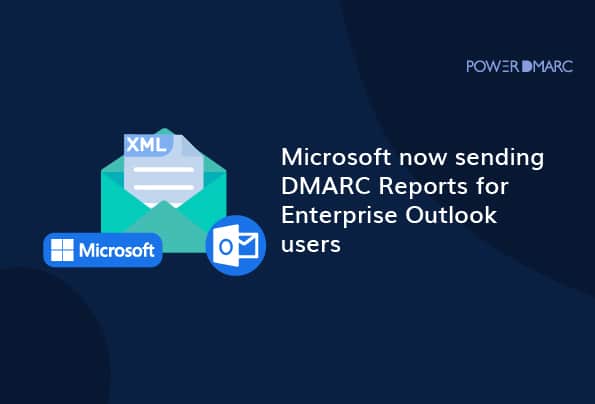As per Microsoft’s update that rolled out on March 21, 2023, reports on authentication and deliverability with DMARC can be received by all domain owners having their MX pointed to Office 365. This major update will allow domain owners to monitor the traffic and configure authentication settings to set an appropriate DMARC policy.
The reports will include details regarding the authentication status of emails sent using your domain. Read the blog till the end to understand how Microsoft’s update will be a boon to enterprise Outlook users.
Key Takeaways
- All domain owners using Office 365 can now receive reports on authentication and deliverability through DMARC.
- DMARC aggregate reports help organizations identify fraudulent email messages sent on their behalf.
- Improved email deliverability can be achieved by analyzing DMARC reports for authentication issues.
- Monitoring DMARC data allows users to protect their brand reputation from email-based attacks.
- An enterprise Outlook user must have a valid RUA address defined in their DMARC record to receive these reports.
Enterprise Outlook Users Have Started Receiving DMARC Reports
Microsoft made an announcement that Office 365 will start sending DMARC aggregate reports (RUA) if the MX points directly to Office 365. However, if the MX doesn’t point to Office 365, then no Microsoft DMARC report will be sent.
This huge improvement in DMARC standards will encourage more users to adopt and improvise their DMARC records for better protection against BEC scams and other email-based cyberattacks.
Simplify Security with PowerDMARC!
Prerequisite for Enterprise Outlook users to receive these reports
To prepare to receive Microsoft DMARC reports, an enterprise Outlook user must have a valid RUA address defined in their DMARC record, independent of their platform or configuration.
For example, your mailbox with the recipient domain xyz.com has its MX record pointed directly to Office 365.(xyz-com.mail.protection.outlook.com). In such a case, Office 365 sends you reports if you’ve got a valid RUA address defined in your DMARC record.
However, if the xyz.com MX record points to another email security solution, Office 365 is not responsible for sending you reports, even if your RUA address is valid. This is because the complicated mail flow routing affects the information seen by Microsoft.
What Does This Mean for Enterprise Outlook Users?
Advantages for Enterprise Outlook users who will now receive DMARC reports are as follows:
They provide insights into the types of attacks targeting the organization
By analyzing the data in these reports, an enterprise outlook user can see which email domains are sending fraudulent email messages on their behalf. This information can help the organization identify potential phishing attacks and take steps to prevent them.
They can help an enterprise outlook user improve their email deliverability
These reports provide information on email messages that pass or fail DMARC authentication. By analyzing this data, an enterprise outlook user can identify issues with their email authentication setup and take steps to improve their email deliverability.
They can help an enterprise outlook user protect their brand reputation
By monitoring the data embedded in these reports, an enterprise outlook user can identify instances where their email domain is being used for fraudulent purposes. By taking action to prevent these attacks, the enterprise can protect its brand reputation and maintain trust with its customers and stakeholders.
Sign up today to get your easy-to-read DMARC reports.
- SPF Neutral Mechanism (?all) Explained: When and How to Use It - June 23, 2025
- DKIM Domain Alignment Failures – RFC 5322 Fixes - June 5, 2025
- DMARCbis Explained – What’s Changing and How to Prepare - May 19, 2025
